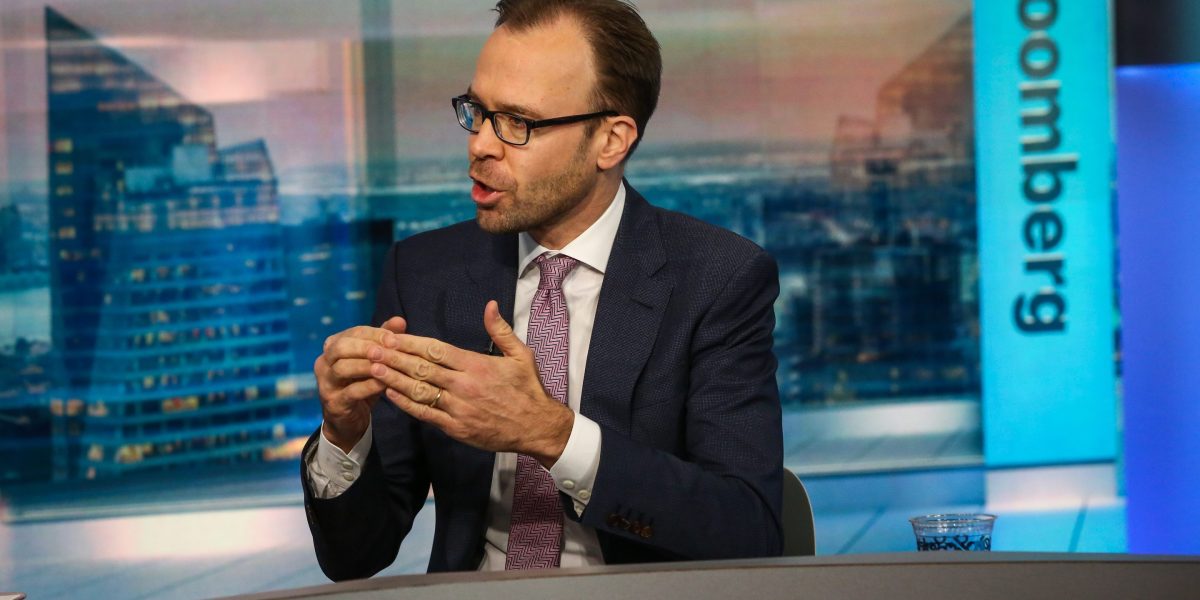
Goldman Sachs’ chief economist says ‘The Great Disinflation’ is underway
[ad_1]

Inflation has been a thorn in the side of central banks worldwide for over two years, but Goldman Sachs’ chief economist Jan Hatzius believes the era of pain for consumers is coming to an end. And Hatzius is someone worth listening to, given his recent track record on the economy.
The combined core inflation rate of the developed markets that faced an inflationary surge during the pandemic fell to an annualized pace of just 2.2% over the past three months, and only 1.3% in November, according to Goldman Sachs data. That’s right around central banks’ 2% target. It means one thing to Hatzius: “Global inflation continues to plummet.”
Hatzius wrote Monday in a note titled “The Great Disinflation” that multiple major central banks in developed markets will make “earlier and more aggressive” interest rate cuts in 2024 as price increases fade.
In the U.S., where year-over-year inflation dropped to just 3.1% in November after hitting a four-decade high above 9% in the summer of 2022, Hatzius sees three back-to-back 25bps interest rate cuts in the first half of next year—probably in March, May, and June—plus two additional cuts by year end. Then, in 2025, he expects three more rate cuts, leaving the Fed funds rate between 3.25% and 3.5% by September of that year.
The forecast is somewhat of a victory lap for Hatzius. While most economists feared a recession was imminent at the beginning of the year, Goldman’s chief economist argued the Fed would be able to tame inflation without sparking a serious economic downturn. His outlook has ranged from 35% odds of a U.S. recession to just 15%, making him one of the most bullish forecasters on the Street.
A robust labor market, lower inflation, and sinking interest rates will help boost GDP growth and corporate earnings next year, in Goldman Sachs’ view. This will be “exceptionally friendly for risk asset markets,” Hatzius, who also heads Goldman’s global investment research division, wrote Monday.
Many so-called risk assets have soared this year after a brutal 2022, with the S&P 500 rising over 23% and the tech-heavy Nasdaq jumping 43%. Cryptocurrencies have also seen a resurgence this year as investors’ appetite for risk has increased. Bitcoin has surged 152% back to near $42,000, while ether is up more than 80% to over $2,100.
David Kostin, Goldman’s chief U.S. equity strategist, even raised his price target for the S&P 500 from 4,700 to 5,100 Friday, citing “lower inflation,” “dovish Fed policy,” and a more “robust” economic outlook that will support stocks next year. The new target represents a roughly 8% upside for the blue chip index in 2024. “Our stronger view of the equity market also dovetails with our colleagues’ upgrades to the U.S. GDP growth,” Kostin explained in a note to clients, referencing Hatzius’ recent forecast revision.
Hatzius expects 2% GDP growth in 2024 and an unemployment rate of just 3.6%. However, the chief economist also noted that his more optimistic outlook for U.S. GDP growth and unemployment could be a double edged sword. While beneficial for the economy and stocks, too much economic strength could lead Fed officials to fear a resurgence of inflation, forcing them to keep interest rates higher for longer.
It “argues for slower cuts,” Hatzius warned, explaining that “any further upside surprises relative to this above-consensus forecast might persuade the committee to pause even with inflation near the target.”
Still, after recent strong GDP, inflation, and retail sales reports, Wall Street’s is becoming increasingly optimistic. Morgan Stanley, which has been one of the most bearish investment banks all year, raised their S&P 500 price target to 4,500 from 4,200 in November. And Infrastructure Capital Management founder and CEO Jay Hatfield, one of the Street’s biggest bulls, raised his S&P 500 price target from 5,100 to 5,500 last week, representing a potential 15% gain for the blue chip index in 2024, even after this year’s more than 20% jump.
Hatfield, like Hatzius, believes “2024 will be the year of global rate cuts”—and that’s nothing but good news for investors.
[ad_2]
Source link


